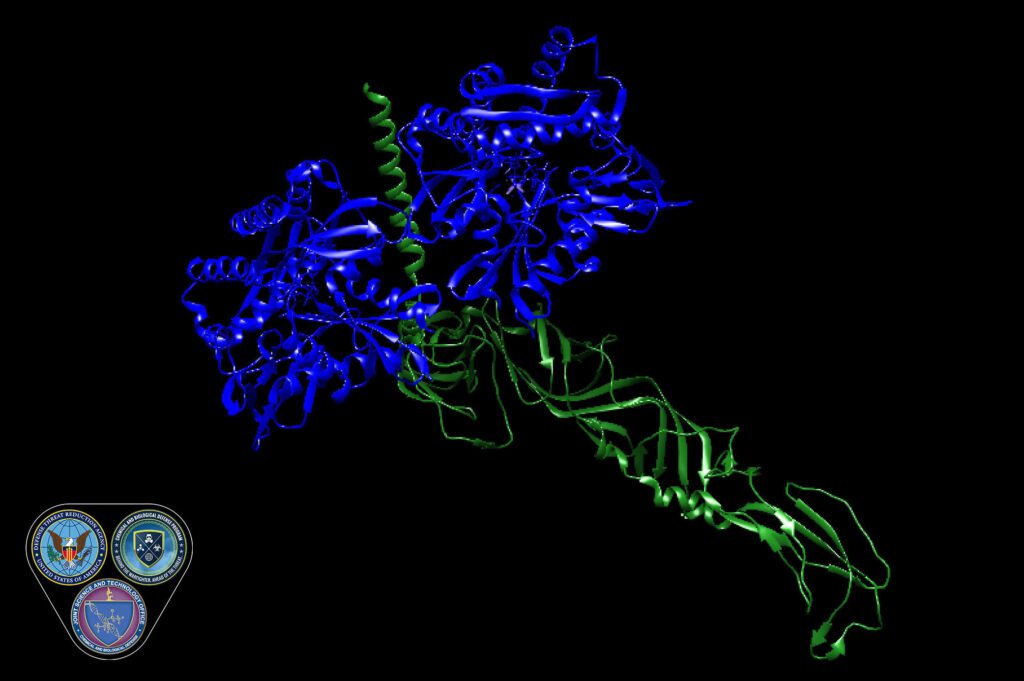Taking Aim at Alphaviruses - Global Biodefense
Alphaviruses are responsible for a considerable number of human and animal diseases. Infectious outbreaks can induce fever, malaise, and headaches, and severe infections can lead to encephalitis, long-term neurological abnormalities, and death.
The Defense Threat Reduction Agency's (DTRA) is investing in research to develop effective, broad-spectrum medical countermeasures to prevent and treat alphavirus infections. This research could also aid in treating other viral infections, such as COVID-19.
Since there are no U.S. Food and Drug Administration (FDA)-approved vaccines or antiviral medicines that prevent or treat alphavirus infections, this is a significant concern to the military servicemembers due to the potential use of alphavirus as a bioweapon. Additionally, climate changes have triggered geological redistribution of mosquitos, ticks, and fleas that carry alphaviruses, which makes this a public health concern.
Several kinds of alphaviruses exist around the world:
- Venezuelan Equine Encephalitis Virus (VEEV) and Eastern Equine Encephalitis Virus (EEEV): Western Hemisphere
- Sindbis Virus: Africa, Asia, Europe, and Australia
- Chikungunya Virus: Africa, and Central and South America
Recently, human cases of EEEV and Chikungunya have occurred within the continental United States. Infections from VEEV and EEEV can be severe due to brain infection, causing encephalitis—a clinically overt inflammation of the brain, long-term neurological abnormalities, and possibly death. In addition to fever, malaise, and headaches in humans, Sindbis and Chikungunya viruses cause a rash and severely painful muscles and joints.
Although the complex development of alphavirus has hindered progress toward effective medicines, DTRA-JSTO researchers noted recently (Kehn-Hall et al., Pathogens, 2021) a significant step toward finding novel human drug targets that interact with VEEV and EEEV to limit virus spread after infection. The research scientists discovered parts of the human cell that, if blocked, could stop the progression of infections.

In a cell-based binding experiment, the research findings were surprising because the alphavirus E2 glycoprotein grabs hold of many different host components, such as those that control metabolism and cellular structure and architecture. Of special interest is that protein GRP78, which has a known inhibitor named HA15, was discovered as a host protein that binds E2 glycoprotein. GRP78 functions as a master regulator involved in cell stress responses, such as viral infections, including pathways responsible for cell death. Tests showed HA15 blocked VEEV, EEEV, Chikungunya, and Sindbis viral growth in infected cells. This molecular binding test uncovered novel virus-host protein interactions that normally go undetected and has broad applications beyond the present use, such as a SARS-CoV-2 virus therapeutic target to treat COVID-19.
In addition to creating new therapeutics to treat various types of alphavirus, this virus-host protein interaction research can also benefit servicemembers in fighting the virus causing COVID 19 by speeding recovery, inhibiting viral mutations like the Delta variant, and stopping the virus from spreading to others.
Source: Adapted from the DTRA Chemical and Biological Technologies Department


This comment has been removed by the author.
ReplyDelete